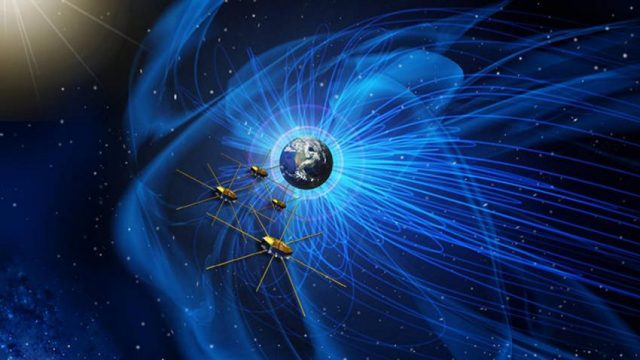MI weekly selection #181

Earth-sun magnetic field interactions seen by NASA space probes
Explosive storms spawned by interactions between the magnetic fields of Earth and the sun can endanger satellites, spacecraft and astronauts in space, as well as power grids on Earth. Now, a fleet of NASA spacecraft has for the first time directly witnessed the mysterious way in which these magnetic explosions occur.
Cold climate shift may have been factor in Neanderthal extinction
Climate change, particularly to colder weather, may have played a role in Neanderthal extinction about 40,000 years ago. “If Neanderthal populations were already on the edge of survival at the end of the Ice Age, the increased competition that occurred when modern humans appeared on the scene may have pushed them over the edge,” said researcher Jamie Hodgkins
Strange radio-wave echoes may finally have explanation
Mysterious radio-wave echoes that occur only in the daytime may finally have been explained more than 50 years after their discovery, according to a new study. Researchers say the echoes detected at the Jicamarca Radio Observatory in Peru in 1962 could be caused by high-energy particles interacting with lower-energy ones in the ionosphere when ultraviolet radiation from the sun hits it.
Evidence of early oxygen found in 2.7-billion-year-old micrometeorites
Tiny sand-pebble-sized meteorites that fell to Earth about 2.7 billion years ago hold surprising information about early Earth’s atmosphere. Researchers found iron oxides in the micrometeorites that suggest oxygen was present when they shot through Earth’s upper atmosphere at a time when there was almost no oxygen in the lower atmosphere. The findings suggest there was about 20% oxygen in the upper atmosphere, about the same as today’s levels.
Tau accumulation correlates with dysfunction in Alzheimer’s
PET imaging found that cognitively impaired patients had significantly more tau tangles in the temporal lobes and cerebral cortex than those who were cognitively healthy, who had minimal tau accumulation. The study also found tau was a better predictor of cognitive dysfunction than beta amyloid. The findings were derived from imaging of 46 participants, 36 of whom had normal cognition while 10 had mild Alzheimer’s.